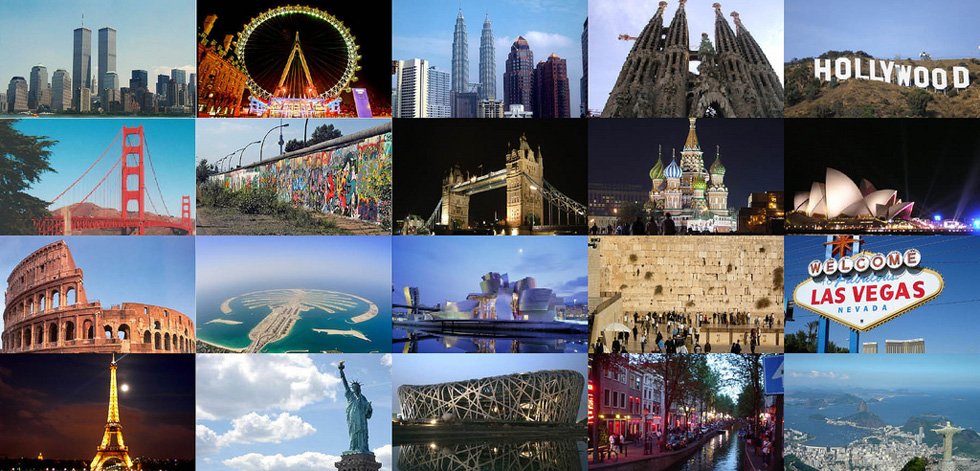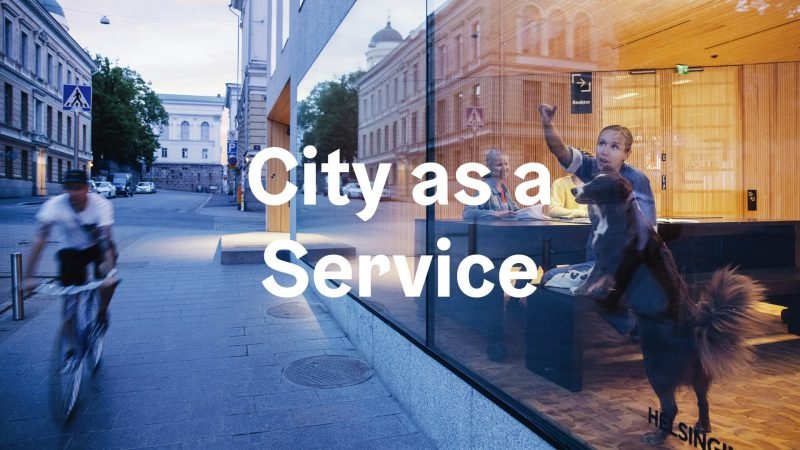Top 20 of the World’s Best City Icons

City marketing has been hot for 20 years. In my opinion, this is not hype but a necessary consequence of the fact that cities have to compete in an international field where the accessibility of places and information has increased exponentially. At the same time, most people in the modern world have the freedom to choose where to go and what they like. Borders are opening up and economic prosperity gives us choices on another level. We do not have to go where there is work, but are in the luxury position of going where things are attractive or interesting.
City icons play an important role in cities’ listing efforts. The icons are the city symbols that are easily spread on postcards sent to family and friends with a story of good times. But also through mass media. When we see one shot of the Golden Gate Bridge in a television series or film, we immediately know it is San Francisco. And that is exactly how these city icons are used by film directors.
Why Are City Icons So Important?
The process of globalisation has led to a changing role of cities within this world. Cities have become the anchor points of our connected society. The world is a network and cities are the nodes within that network. The importance of distance seems to be disappearing due to digital networks, telecommunications and scaling up mobility. A level playing field of the world’s major cities is emerging as a result of global communicative interaction. Some call this the ‘Global Village’. Within this global world, leading cities must compete internationally to attract the positive: tourists, talents, multinationals and events. This ‘Global Village’ has succeeded mainly because of innovations in (tele)communications. This means that the strategy to win the competition is also a matter of communication. The fundamental questions posed to city leaders today are: what idea about a city is spread? And how do you communicate with an international audience?
Worldwide, many city marketing campaigns have been created to promote the strength of cities operating within this global scale. Some did incredibly well, but most failed completely. Whether it is city marketing or more in-depth city branding, it turns out to be really difficult to find a unique selling point that marks your city’s position in the world. City icons are a powerful tool to spread the message of identity. For centuries, city icons have been used to create a landmark and show the strength of a particular place.

Top 20 of the Most Powerful City Icons
For this article, I have selected the top 20 best urban icons in the world. They are all very famous, of course. To focus, I have selected only built city icons. Other non-built city icons are conceivable and can also be very strong. A great example is certainly the red double-layer bus in London. But those examples are left aside here. All the icons shown here are built or at least places to visit.
- Eiffel Tower (Paris)
- Statue of Liberty (NYC)
- Palm Tree (Dubai)
- Hollywood (Los Angeles)
- Twin Towers (New York City)
- Colosseum (Rome)
- ‘Welcome to Las Vegas’ sign (Las Vegas)
- Golden Gate Bridge (San Francisco)
- The Berlin Wall (Berlin)
- Red Light District (Amsterdam)
- Kremlin (Moscow)
- Guggenheim (Bilbao)
- London Eye (London)
- Petronas Twin Towers (Kuala Lumpur)
- Olympic Stadium (Beijng)
- Jesus Statue (Rio de Janeiro)
- Tower Bridge (London)
- Opera House (Sydney)
- Wailing Wall (Jerusalem)
- Sagrada Familia (Barcelona)
A categorisation can be derived from the list above.
- Historically built.
A lot of these icons are historical. They are made before the period of city marketing became common sense. The builders of most of them, on the other hand, might have had the ambition already then to make them icons. Mostly with religious, economic and empirical reasons, to stress power and welfare to friends and enemies. Examples are the Sagrada Familia in Barcelona and the Kremlin in Moscow. - Historically grown.
These were never meant to be an icon. The course of history changed them from ordinary constructions to meaningful symbols on an international level. Examples of these are the Berlin Wall, the Wailing Wall in Jerusalem and Amsterdam’s Red Light District. The build aspects aren’t really spectacular, but the meaning in historical or contemporary perspective is huge. - Modern builds.
These are built to be an icon from the perspective of city marketing: Dubai’s Palm Tree, the Guggenheim Museum in Bilbao and the Sydney Opera House, plus the Petronas Twin Towers (Kuala Lumpur), the London Eye (London) and Beijing’s Olympic Stadium. - Lucky shots.
Simple but powerful, they can be seen as a lucky shot. The makers of the Hollywood signs surely never believed their sign to become such an important symbol for Los Angeles. The Statue of Liberty, on the other hand, was a French gift. They surely never had the idea to do such a big thing to New York. If they would have been that clever, they would have done it in their own capital. The Eiffel Tower is an other example, as it was meant to be a temporary construction made for the World Expo of 1889, to celebrate the 100th anniversary of the French Revolution. More than 100 years later it’s still there, alive and kicking.
The Top 6
I would like to like to explicate the top 6 of best city icons. What makes these icons so powerful? And what is their secret? Doing so, we should not focus on the physical dimensions, but rather on the mental significance. Good city icons carry a meaning. They tell a story about the associated city and embody a significant cultural, mental and emotional layer about that city.
- The Eiffel Tower is definitely the most important symbol of Paris. It has a simple form, and a huge ‘logo capacity’. Besides it has significance. It symbolises what Paris is and wants to be: the world’s most romantic city. The Eiffel Tower is a part of this romantic story about Paris. Love couples from all over the world go up to see the sunset over Paris. What makes the Eiffel Tower to the number one location for wedding proposals. The Eiffel Tower embodies the romantic city that paris wants to be.
- The Statue of Liberty is a great example of the meaning that a city icon can have. It stands for two of New York’s most important cultural and societal features: hospitality to strangers, visitors and immigrants, and, as written in its name, freedom. Immigrants form the roots of New York’s society. They all faced the Statue of Liberty for the first time and for most of them it must have had the great feeling of being welcome in the Big Apple. New York is still a multicultural society with a lot of possibilities and chances for its inhabitants. New York sets you free, and that’s what the Statue of Liberty tells the world.
- Dubai’s Palm Tree is only a couple of years old, but has made clear very quickly what Dubai stands for: E-ve-ry-thing is possible here. No idea too big to be executed. It’s an engineer’s city, created by the human species of modern time. Dubai says ‘hello’ to the world as a waiving Palm Tree, considering the perspective of contemporary path and media. People come to Dubai by plane and discover the first of it from the air. Together with the emergence of Google Earth, this has created a fifth facade of the city. Dubai has taken advantage of these developments. Further, the Palm Tree in the blue ocean is the sign of a good and sunny life. Like on a tropical island.
- The letters on the Hollywood hills are really simple, but one of the most well known city icons. They represent the idea that Hollywood wants to give you. If you want to make it in the world of movies, celebrities and cocktail parties, you should go to Los Angeles. It’s the world’s capital of film, celebrated each year with the world famous Oscar shows.
- The Manhattan Twin Towers stood for going to the top. The top of the world. Not only physical, but also personal and in business. This embodied the idea of city. If you an make it there you can make it everywhere. The Twin Towers seemed to be almost twice as high as the rest of the New York skyscrapers. It was the centre of the world in terms of economy, trade and business. With on board the World Trade Centre (WTC). A true centre of capitalism. The attacks of 9/11 have proved the meaning of the two towers as the symbol of everything New York stood for.
- Rome’s Colosseum stands for the true identity of Rome. An ancient city that relies on its historical importance. Rome isn’t a very innovative city these days. The Colosseum as an icon shows the current importance of historical values among Rome’s inhabitants. It shows powerfully what to expect here, well preserved relics form the past, with a well known storyline about a significant period in history.
What Makes a Good City Icon?
To conclude: What makes a good city icon?
- Incredibly well known.
Brilliant city icons are worldwide well known. At the same time, they are mentally related to the city. The compilation of the top 20 best city icons is automatically not an original list as everybody has to know them. - Logo quality.
A good city icon can be captured in a picture. They form not only an icon, but a sort of a logo as well. The language has to be simple, understandable but at the same time applicable in communication. This makes a city icon a sort of an open source image. Everybody should be able to work with it and to use it as a reference to the city. As the movie director does with the Golden Gate Bridge, making a film about San Francisco. - Remarkable.
A city icon should be remarkable. And because nothing usual gets remarkable, a city icon should be over the top. Some examples used this expression literally. Building the highest tower for years, and still now has been a way to express identity of being strong. Being remarkable is also been seen in architecture. The Guggenheim Museum in Bilbao and the Olympic Stadium in Beijing made a strong effort to make something completely new and unexpected. - Original.
Never copy a symbol of another city! Not literally, but not the idea behind it as well. This sounds as an easy and understandable rule. But most city marketing campaigns go wrong here. It makes no sense to put the letters ‘I Amsterdam’ as a landmark in the city of Amsterdam. That’s too much of Hollywood in the first place and refers too much to the ‘I ♥ NYC’ campaigns. It says nothing about the real Amsterdam. It’s just ‘me too’. It’s a fake message that you won’t get away with. The international audience will definitely notice that the city tries too hard. It reveals the paradox of emphasising your uniqueness by copying the symbols of somebody else. An exception can be made for cities that want to be branded as fake. Imagine the fake Eiffel Tower in Las Vegas. Another example is the imitation of the Twin Towers in Kuala Lumpur. This at least embodies the real identity of Kuala Lumpur as a South Eastern Asian City, trying to compete with Western leading capitals. The imitation culture which this part of the world is known for, makes it an authentic sign. This brings us to the next rule. - Authenticity.
A city icon should embody the real identity of the city that it’s representing. It’s not only a physical shape that makes a city icon work, but a whole imaginary story around it. The icon should represent the main cultural and mental ideas of the city. It’s a symbol of what the city – including its inhabitants – stand for. A real identity. As the Statue of Liberty, for instance, stands for New York’s values of openness, freedom and hospitality. - Identification.
Make sure that your city icon is not only working towards strangers, but also for the people that live in the city. Because they are the real city. The people are the most prominent ingredient of a city. This means that they should get along with the internationally promoted identity about them. They are the city’s most important ambassadors as most of them are internationally active as well. This make the marketing of a city different from the marketing of a company. Entrepreneurship is about clients and the city is about inhabitants. For a company counts that brand position and identity are the most valuable things, even more then employees, machines and buildings. Brand position is the only stable factor within most companies, the rest is replaceable. For a city the people are most important. They can’t be changed, and expect the city to take care about them.





